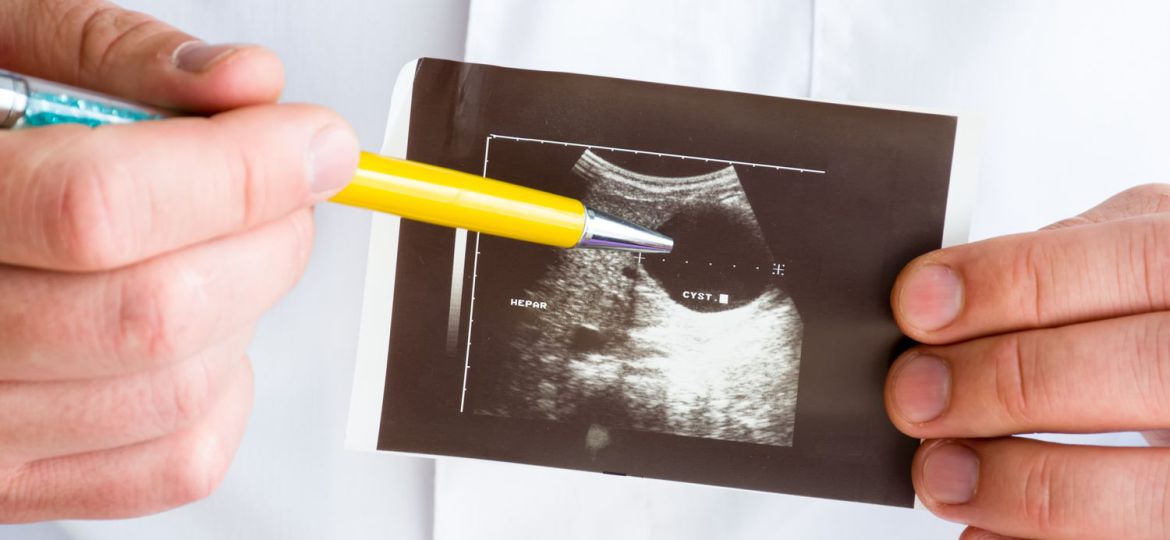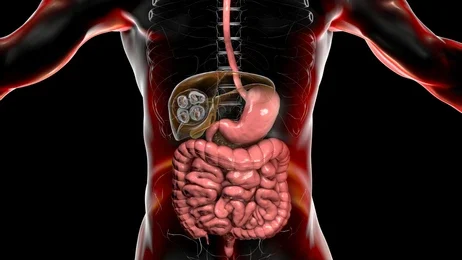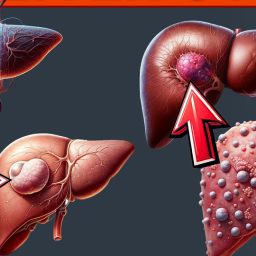
1. Types of Liver Cysts and Their Cancer Risk
A. Simple Liver Cysts
Simple liver cysts are fluid-filled sacs that are generally asymptomatic and benign. These cysts are usually discovered incidentally during imaging tests such as ultrasounds or CT scans, typically performed for unrelated reasons. Simple liver cysts are considered low risk for developing into cancer, and in most cases, they do not require specific treatment or monitoring unless they become symptomatic or unusually large.
However, in very rare cases, even simple cysts can undergo changes. The risk of malignancy in simple liver cysts is extremely low, but the possibility of a cystic degeneration—where the cyst may develop internal changes due to infection or inflammation—should not be entirely dismissed. This degeneration could potentially lead to the formation of secondary cysts or tumors that may require further investigation.
B. Polycystic Liver Disease (PLD)

Polycystic liver disease (PLD) is a genetic condition that leads to the development of numerous cysts within the liver. PLD is often associated with polycystic kidney disease (PKD) and can result in liver enlargement, leading to discomfort and a range of symptoms. While PLD is typically a benign condition, the accumulation of multiple cysts in the liver may create an environment where complications can arise.
The relationship between PLD and liver cancer (specifically, hepatocellular carcinoma or HCC) is not fully understood. However, research has shown that individuals with PLD, particularly those who also suffer from polycystic kidney disease, may have a slightly higher risk of developing liver cancer. This risk is generally considered to be low, but it can be influenced by other factors, such as the presence of cirrhosis or liver damage caused by prolonged cyst growth.
C. Biliary Cystadenomas
Biliary cystadenomas are rare benign tumors that originate from the bile ducts in the liver. These cysts are typically larger than simple liver cysts and can cause significant symptoms, including abdominal pain and nausea. Although biliary cystadenomas are non-cancerous in most cases, there is a risk that they can develop into biliary cystadenocarcinoma, a type of cancer.
The risk of malignancy in biliary cystadenomas is higher compared to other types of liver cysts. When these cysts show signs of rapid growth, significant size, or symptoms like jaundice, they may be considered for surgical removal. Early detection and surgical intervention are essential in preventing potential malignant transformation.
D. Hydatid Cysts
Hydatid disease, caused by parasitic infections from the Echinococcus tapeworm, can lead to the formation of cysts in the liver, known as hydatid cysts. While these cysts are generally benign, they can lead to significant complications, including rupture, which may cause the spread of the infection to other organs and tissues.
In rare cases, hydatid cysts can lead to secondary infections or, in some instances, may harbor cancerous cells if they remain untreated for a long time. These cases are extremely rare but are associated with the persistence of the parasite, which can cause chronic inflammation and damage to liver tissue. Treatment of hydatid cysts typically involves antiparasitic medications and, when necessary, surgical removal.
2. Risk Factors for Liver Cysts Becoming Cancerous
Several risk factors are associated with an increased likelihood of liver cysts becoming cancerous. These factors can be related to the characteristics of the cyst, the individual’s medical history, and their overall liver health. The following are some of the most significant risk factors:

A. Cirrhosis and Liver Disease
Liver disease, particularly cirrhosis, can increase the risk of liver cysts becoming malignant. Cirrhosis is a condition where the liver becomes severely scarred, often due to chronic alcohol use, viral infections such as hepatitis, or non-alcoholic fatty liver disease (NAFLD). When the liver is in a state of cirrhosis, the regenerative process within the liver can cause cysts or other types of lesions to form. These cysts can develop into hepatocellular carcinoma (HCC), the most common form of liver cancer.
Individuals with cirrhosis who have liver cysts should be closely monitored for any signs of liver cancer, especially if the cysts are large or symptomatic. Routine screening, including ultrasounds and blood tests for tumor markers such as alpha-fetoprotein (AFP), is essential for early detection of potential malignancy.
B. Age and Gender
Age and gender also play a role in determining the likelihood of liver cysts becoming cancerous. Hepatocellular carcinoma (HCC) is more commonly seen in individuals over the age of 50, and the risk increases significantly with age. Additionally, men are more likely to develop liver cancer compared to women, although women with certain risk factors such as polycystic liver disease or biliary cystadenomas may also be at risk.
The presence of certain genetic predispositions or inherited conditions can further increase the risk of malignancy in liver cysts. Individuals with a family history of liver cancer, cirrhosis, or genetic disorders like familial adenomatous polyposis should be vigilant about monitoring liver health.
C. Environmental and Lifestyle Factors
Environmental factors and lifestyle choices, such as excessive alcohol consumption, exposure to certain toxins, and chronic viral infections, can all increase the risk of liver cancer. Chronic hepatitis B or C infections, for instance, are known to increase the risk of HCC. These infections cause ongoing inflammation and liver damage, which can contribute to the development of malignant tumors.
Additionally, lifestyle factors such as obesity, smoking, and a diet high in fat can contribute to the development of liver disease and, in turn, elevate the risk of liver cancer in individuals with cysts.
3. Monitoring and Management of Liver Cysts
For individuals with liver cysts, regular monitoring is essential to detect any changes that could signal malignancy. While the majority of liver cysts are benign and do not require intervention, certain cysts may need to be closely observed for growth or signs of complications.
A. Imaging and Diagnostics
The primary method for monitoring liver cysts is through imaging tests. Ultrasounds are commonly used as a first-line diagnostic tool to identify liver cysts. If further evaluation is required, CT scans or MRIs may be employed to provide more detailed information about the cysts’ size, location, and characteristics.
In some cases, additional tests may be conducted to assess liver function, such as blood tests that measure liver enzymes and tumor markers (e.g., alpha-fetoprotein). These tests can help identify potential risks and provide early warning signs of malignancy.
B. Surgical Intervention
If a liver cyst is found to be growing, symptomatic, or showing signs of malignancy, surgical removal may be recommended. The decision to undergo surgery depends on factors such as the cyst’s size, its impact on liver function, and the overall health of the patient.
Surgical options include cyst aspiration (draining the cyst of fluid) or resection (removal of the cyst or affected part of the liver). For cysts suspected of being malignant or showing signs of transformation, resection is usually the preferred approach to ensure complete removal of potentially cancerous tissue.
4. Preventive Measures and Healthy Lifestyle
While not all liver cysts can be prevented, individuals can take certain steps to reduce their risk of complications, including liver cancer. Maintaining a healthy lifestyle by avoiding excessive alcohol consumption, eating a balanced diet, and staying physically active can help protect liver health.
Vaccination against hepatitis B, regular screening for hepatitis C, and maintaining a healthy weight are also important preventive measures. For individuals with a family history of liver disease or genetic conditions associated with liver cysts, genetic counseling and regular medical check-ups are recommended.
Liver cysts are generally benign and do not carry a significant risk of becoming cancerous. However, under certain conditions, including the presence of cirrhosis, polycystic liver disease, or biliary cystadenomas, liver cysts may become cancerous. Regular monitoring, early detection through imaging and blood tests, and maintaining a healthy lifestyle are essential strategies for managing liver cysts and minimizing the risk of malignancy.
For individuals with liver cysts, working closely with a healthcare provider to monitor liver health and receiving appropriate screenings can ensure the best outcomes and reduce the risk of liver cancer.


